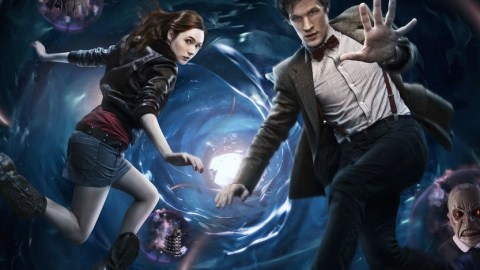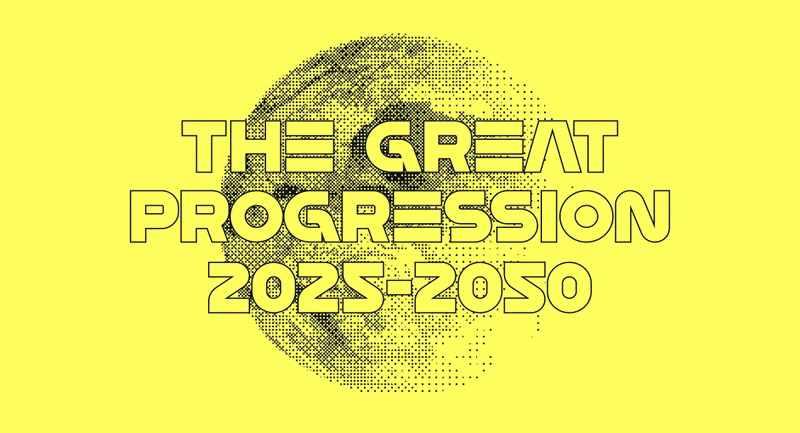Is Time Travel Just a Literary Fantasy?

On the rare occasions when you can get a straight answer from scientists about time travel, it’s usually a gloomy one. Michio Kaku, writing for this very website, tells us that Einstein “finally concluded that time travel might be inherent in his equations,” but dismissed the notion “on physical grounds,” meaning that no known mechanism would facilitate such a journey. Stephen Hawking has gone so far as to formulate—“half sardonically,” according to Scientific American—the “chronology protection conjecture,” which posits that the laws of physics don’t allow for time machines of any kind. And last month, Hong Kong scientists claimed to have driven a final nail into the coffin of the concept, having demonstrated that nothing—not even a single photon—can travel faster than light speed.
I am unprepared to judge any of these claims. I believe in the capacious weirdness of the universe, so it pains me to rule something like this out, but when it comes to “proven facts” I’m at the mercy of what scientists tell me. You may be scoffing: “Hey, Book Think guy—why didn’t you read a physics book before writing this post?” The answer is that I like my science antiquarian and preposterous, so I decided to read H. G. Wells’ The Time Machine instead.
I’d been meaning to get around to this one for a while, and it did not disappoint. It’s one of those books whose originality and power are measured by its failure on any terms other than its own. As science, it’s junk; as literature, it has only a few highlights (one of which I’ll discuss below); as social criticism, it’s pretty silly. But as The Time Machine, it’s great.
Time travel had appeared in previous works—A Connecticut Yankee in King Arthur’s Court, for example—but by and large, it shared the same order of magic, of fantasy, as levitating broomsticks. At the time in which Twain wrote his novel, ghosts would have been viewed as a more realistic plot device. Wells’ novella, which appeared only six years later, changed all that by giving the concept an aura of scientific plausibility that, I would argue, it’s never quite shed. (Obviously Einstein helped in this regard, but The Time Machine predated his first breakthroughs by a decade, and time travel as most of us imagine it has less to do with Einstein than with Wells.) Wells gave us the dream of time travel that lingers—so powerfully that a team of scientists in 2011 felt compelled to refute it, as part of an experiment whose immediate concern was the properties of light.
From Wells we get the very phrases “time machine” and “Time Traveller” (“for so it will be convenient to speak of him,” says the narrator). More importantly, we get a sense of straight-faced, stiff-mustached, Victorian dignity surrounding the whole enterprise. The novella begins with the Time Traveller lecturing his dinner guests about the fourth dimension, and its tone remains resolutely scientific, or science-esque, throughout. In fact the governing structure of the story is the series of hypotheses the Time Traveller forms about the future he witnesses, and either confirms or disconfirms as his experience allows.
Wells’ future, as every Wishbone fan knows, contains two races: the Eloi and the Morlocks. These turn out to be the evolutionary products of the human upper classes and lower classes, respectively. The Eloi are effete and childlike, the Morlocks brutish and predatory. The Eloi live above ground, the Morlocks below (except when they come out at night to prey on the Eloi). Neither has much in the way of a language; each, in a different sense, has devolved. A kind of relentless social Darwinian logic originally forced the divergence between castes, a state of affairs that—in the Time Traveller’s view—was all well and natural until it fell apart.
All time travel stories are really lenses on the present, and this bit of commentary didn’t hold up far beyond the date it was published. Or did it? With the advent of genetic engineering, the notion of separate evolution along class lines has gotten some people worked up all over again. And a few of Wells’ other predictions, such as the sophisticated bioengineering of our natural environment, have advanced steadily toward realization. In any case, we’ll have to wait another 800,000 years to say for sure whether he was right. For now it’s enough to doubt that anyone at that date will stumble on an abandoned archeological museum containing camphor and dry matches.
The museum scene may be the most implausible as prophecy, but it’s the most charming and persuasive as a literary touch. Discovering the box of matches, the Time Traveller turns to his Eloi companion, Weena:
‘Dance,’ I cried to her in her own tongue. For now I had a weapon indeed against the horrible creatures we feared. And so…to Weena’s huge delight, I solemnly performed a kind of composite dance, whistling The Land of the Leal as cheerfully as I could. In part it was a modest cancan, in part a step dance, in part a skirt-dance (so far as my tail-coat permitted), and in part original. For I am naturally original, as you know.
I think this is Wells’ celebration of his own creative spirit, and it’s the most human moment in the book.
The Time Machine as a whole has the uncanny oddity of something assembled in a home laboratory. The narration skips unpredictably back and forth—partly as an echo of the subject, but mostly as an attempt to build suspense, and to capture the conversational quality of the narrator’s tone. It’s clunky, but it works. And then there’s the scene toward the end, in which the Time Traveller flees from the Morlocks into a still more distant future, where the sun is dying and giant crablike creatures roam. This episode has no dramatic purpose and very little thematic relevance. It’s tacked on because Wells was curious about the end of time, and wanted to see what he’d find there.
The day may come when the likes of Stephen Hawking will no longer field serious questions about time machines, just as they no longer do about ghosts. But to the extent that the dream still seems to hover at the edge of possibility, we have Wells to thank. Update 3:18 PM: No time to explain—back from the future—mother of God, was I wrong. Stock up on camphor, now.
[Image courtesy Doctor Who official site, BBC.]




